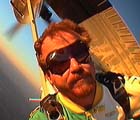 |
As Tamara makes her second jump with a head mounted camera, a Sony DCR PC7, William exits from a Twin Otter to show us how he performs his relative cartwheel transitions in freeflying. William first demonstrates a cartwheel transition from a headup flying stance to a head-down flying stance. |
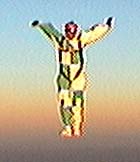 |
From a basic headup flying stance (not shown), sometimes it's necessary to accelerate the fallrate first to help prevent from floating during the transition. William accomplishes this by assuming a standing position just prior to initiating his cartwheel. This technique is more crucial for light weight freeflyers. |
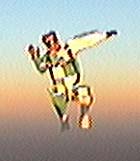 |
To start the cartwheel transition, tuck in an arm and shift the legs off to the side as well as tucking them. William tucks his right arm and shifts his legs towards his left as he tucks to make a cartwheel transition towards the right. The more you tuck during the transition, the more quickly you'll finish the transition and the less likely you will float. If you tend to sink out on transitions, then you'll want to tuck less during the transition. |
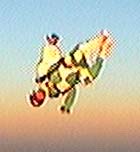 |
William continues his cartwheel transition towards the head-down orientation. Notice that he maintains eye contact with the horizon and his partner (camera flyer) in front of him. |
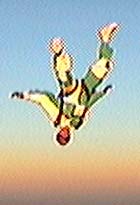 |
As William moves into the head-down orientation, he extends his left arm and leg more so that he will stop in the head-down orientation. |
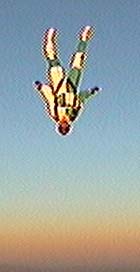 |
Once head-down, it may be necessary to assume a more streamlined position to re-establish or to maintain relativity before spreading into a basic head-down flying stance (not shown). This technique is more critical for light weight flyers. |
 |
Next, William performs a transition from the head-down flying stance to a headup flying stance. |
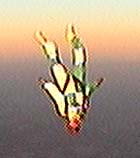 |
Starting from a basic head-down position (not shown), William assumes a more streamlined body position to first accelerate his fallrate. This helps prevent floating during the transition. |
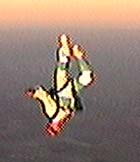 |
To start the cartwheel transition towards his left, William tucks his right and bends his torso towards the left. |
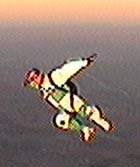 |
William approaches the headup orientation. Notice that he maintains eye contact with his partner (camera flyer) and horizon in front of him. His left arm is extended ready to catch air for stopping in a headup orientation. |
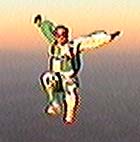 |
Using his left arm (with the right arm raised and catching less air), William stops in a headup orientation. Next, remember to spread your legs into a clean basic stance. A good basic stance (not shown) is one during which the legs are spread as if you're sitting on a chair with back of the chair in front of your chest. |
